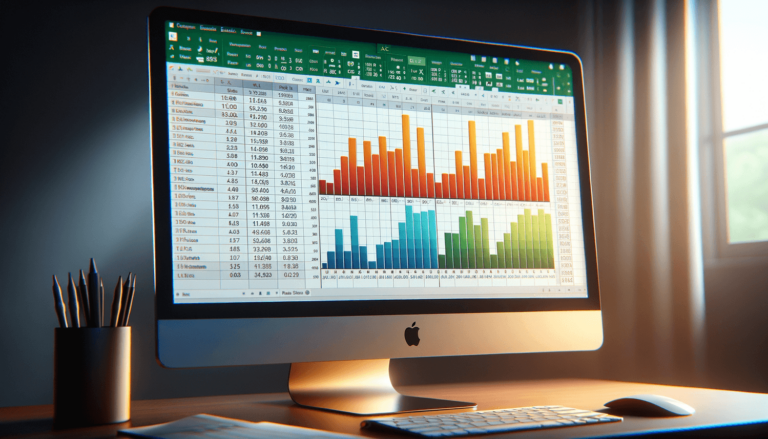

Are you struggling to add labels to the X and Y axes in your Excel charts? Look no further. In this blog post, we will guide you through the process of adding Axis labels to your Excel charts. Axis labels are vital to help readers understand the information presented in your chart. Whether you are presenting data to colleagues or clients or using graphs for personal projects, having clear labels is essential. Excel makes it easy to add and customize your Axis labels, so let’s get started.
To add Axis labels to your chart, you must first select the chart that you want to edit. Click on the chart in your Excel spreadsheet, and it will become highlighted.
Next, you need to access the Chart Elements button. This button allows you to customize the different elements of your chart. It is located in the top-right corner of your chart, and it looks like a plus sign in a box.
Once you have access to the Chart Elements button, you need to click on the arrow next to the Axis Titles option. This will open a drop-down menu where you can select which axis you want to add a label to. Select the axis you want to edit, and then click on the option for Primary Horizontal Axis Title or Primary Vertical Axis Title.
Once you have added the Axis title, you can customize it to fit your needs. Click on the Axis title, and it will become highlighted. You can then edit the text directly in the chart to change the label to what you want it to say. You can also use the formatting tools on the Excel Ribbon to change the font size, color, and more.
If you need to add more Axis Labels, simply repeat Steps 3 and 4 to add as many labels as you need. It is important to note that you can only add one label per axis.
Adding Axis labels to your Excel charts is a simple process that can greatly enhance the clarity and aesthetics of your chart. By following these five simple steps, you can easily add and customize your Axis labels to fit your specific needs.
Axis labels are an essential component of any Excel chart. The labels help readers understand the information presented in your chart. Without labels, readers may misinterpret the data and draw incorrect conclusions. By adding Axis labels, you can provide context and make your data more accessible to a wider audience.
Excel offers a wide range of customization options for your Axis labels. In addition to changing the font and color, you can also add a prefix or suffix to your labels, which can be helpful when dealing with data that uses different units of measurement. For example, you can add a dollar sign to financial data or a percentage sign to show growth or decline. You can also format your labels as numbers or dates, which can be helpful when working with time series data.
If you are using data from multiple sheets to create your chart, Excel will automatically update the Axis labels when you make changes to the data. This is especially helpful if you need to update your data frequently. However, if you want to use different Axis labels for different sheets, you can use the Custom Labels feature. This feature allows you to create unique Axis labels for each sheet in your workbook, giving you greater control over the appearance of your charts.
If you frequently use charts in your work or personal projects, you may want to save your customized settings for future use. To do this, simply right-click on your chart and select Save As Template. This will save your chart settings as a template that you can use again in the future. If you want to apply the same settings to a new chart, simply select the chart and click on Change Chart Type. Then, select your saved template from the list and click OK. Your new chart will now have the same customized settings as your original chart.
Here are answers to some of the most common questions about adding Axis labels to your Excel charts:
No, you can only add one Axis label per axis in your chart. Excel will automatically add an Axis title for the other axis if you add one.
Yes, you can customize the color and font of your Axis labels using the formatting tools on the Excel Ribbon. Simply click on your Axis label to highlight it, and then select the formatting options you want from the Ribbon.
To add a prefix or suffix to your Axis labels, choose the Axis you want to edit, click on the Axis Title, and select More Options. From there, select Number, and then choose the format you want. You can then add a prefix or suffix in the appropriate field.
No, Excel will automatically update the Axis labels in your chart if you make changes to the data. This can be especially helpful if you need to update your data frequently.
Yes, you can save your customized chart settings as a template for future use. Simply right-click on your chart and select Save As Template. You can then select your saved template when creating a new chart.
Explore the world of Microsoft PowerPoint with LearnPowerpoint.io, where we provide tailored tutorials and valuable tips to transform your presentation skills and clarify PowerPoint for enthusiasts and professionals alike.

Your ultimate guide to mastering Microsoft Word! Dive into our extensive collection of tutorials and tips designed to make Word simple and effective for users of all skill levels.

Boost your brand's online presence with Resultris Content Marketing Subscriptions. Enjoy high-quality, on-demand content marketing services to grow your business.
